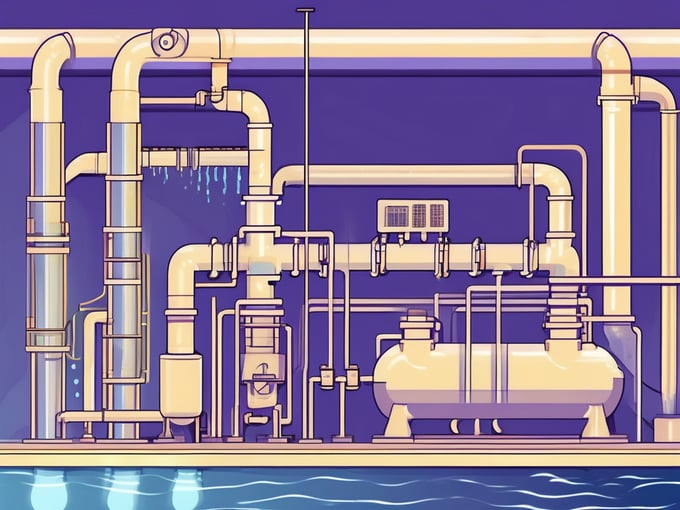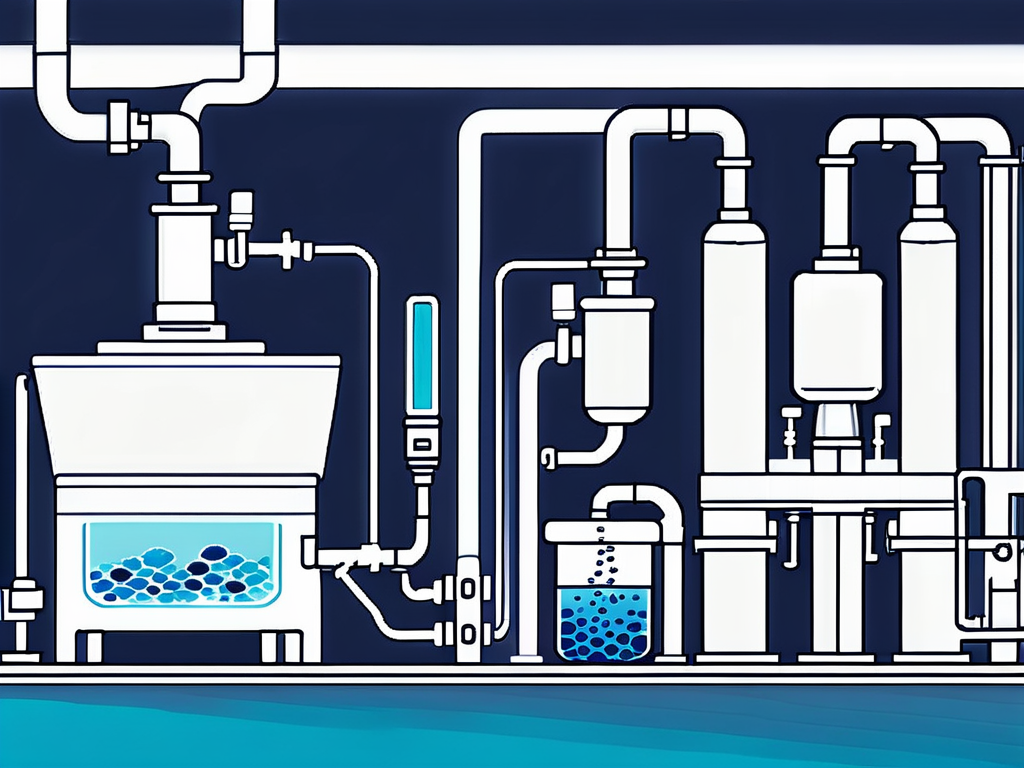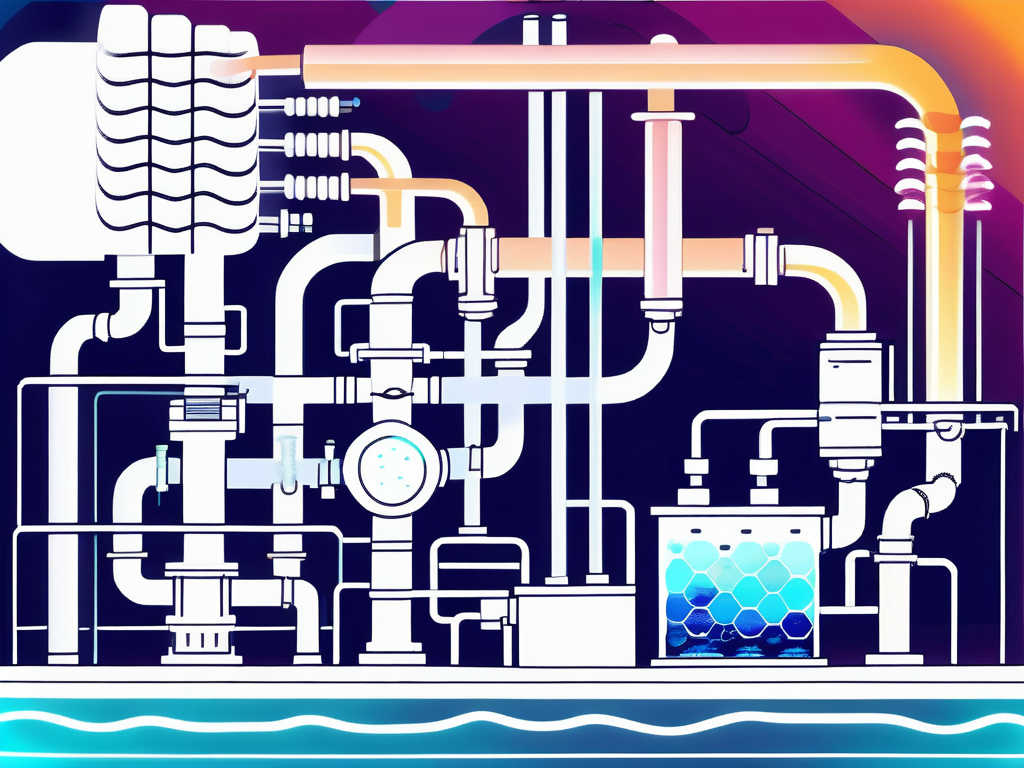
Ultraviolet Light: Wastewater Treatment Explained
Ultraviolet light, a form of electromagnetic radiation, has been increasingly utilized in the field of wastewater treatment. This article provides an in-depth exploration of the role of ultraviolet light in wastewater treatment, the science behind it, its advantages and disadvantages, and its application in various industries.
Wastewater treatment is a critical process in maintaining the health of our environment and public health. By understanding the role of ultraviolet light in this process, we can better appreciate its importance and potential for future applications.
The Science of Ultraviolet Light
Ultraviolet (UV) light is a type of electromagnetic radiation that sits on the spectrum between visible light and X-rays. It is characterized by its high-energy and short-wavelength properties, which are key to its effectiveness in wastewater treatment.
UV light is divided into three categories based on wavelength: UV-A, UV-B, and UV-C. Of these, UV-C has the shortest wavelength and the highest energy, making it the most effective for disinfection purposes.
UV Light and Microorganisms
UV light, particularly UV-C, has the ability to inactivate microorganisms such as bacteria, viruses, and protozoa. This is achieved by damaging the DNA and RNA of these microorganisms, preventing them from reproducing and thus rendering them harmless.
The effectiveness of UV light in inactivating microorganisms is dependent on several factors, including the intensity of the UV light, the exposure time, and the specific characteristics of the microorganisms.
UV Light and Chemical Compounds
UV light can also be used to break down certain chemical compounds in wastewater. This process, known as photolysis, involves the absorption of UV light by the chemical compound, causing it to break down into simpler substances.
The effectiveness of UV light in breaking down chemical compounds is dependent on the specific characteristics of the compound, including its absorption spectrum and the presence of catalysts.
UV Light in Wastewater Treatment
UV light has been increasingly utilized in wastewater treatment due to its effectiveness in inactivating microorganisms and breaking down chemical compounds. This section explores the role of UV light in various stages of wastewater treatment.
It's important to note that while UV light is effective in treating wastewater, it is typically used in conjunction with other treatment methods to ensure the comprehensive removal of pollutants.
Primary Treatment
In the primary stage of wastewater treatment, UV light is not typically used. This stage involves the removal of large solids and particles from the wastewater through physical processes such as screening and sedimentation.
However, UV light may be used in the primary treatment stage in specific circumstances, such as when there is a high concentration of certain chemical compounds that can be broken down by UV light.
Secondary Treatment
In the secondary stage of wastewater treatment, UV light plays a crucial role in disinfection. This stage involves the use of biological processes to break down organic matter in the wastewater.
Following these biological processes, UV light is used to inactivate any remaining microorganisms, ensuring the safety of the treated wastewater. The use of UV light in this stage is particularly beneficial as it does not produce harmful byproducts, unlike other disinfection methods such as chlorination.
Tertiary Treatment
In the tertiary stage of wastewater treatment, UV light may be used to further disinfect the wastewater and to break down certain chemical compounds. This stage involves advanced treatment processes to remove remaining pollutants and to improve the quality of the treated wastewater.
The use of UV light in this stage can enhance the overall effectiveness of the wastewater treatment process, particularly in situations where high levels of disinfection are required or where there are specific chemical compounds that need to be removed.
Advantages and Disadvantages of UV Light in Wastewater Treatment
Like any technology, the use of UV light in wastewater treatment has its advantages and disadvantages. Understanding these can help in making informed decisions about its application.

The following sections discuss the main advantages and disadvantages of using UV light in wastewater treatment.
Advantages
One of the main advantages of using UV light in wastewater treatment is its effectiveness in inactivating a wide range of microorganisms, including those that are resistant to other disinfection methods. This makes it a powerful tool in ensuring the safety of treated wastewater.
Another advantage of using UV light is that it does not produce harmful byproducts. This is in contrast to other disinfection methods such as chlorination, which can produce harmful byproducts such as trihalomethanes and haloacetic acids.
Furthermore, the use of UV light does not require the addition of chemicals to the wastewater, making it a more environmentally friendly option. It also does not alter the taste, odor, or color of the treated wastewater, which can be beneficial in certain applications.
Disadvantages
One of the main disadvantages of using UV light in wastewater treatment is the high energy consumption. The UV lamps used in the process require a significant amount of electricity, which can be a drawback in areas where energy costs are high or where there is a lack of reliable electricity supply.
Another disadvantage is that the effectiveness of UV light can be reduced by certain factors, such as the presence of particles in the wastewater that can shield microorganisms from the UV light. This means that the wastewater needs to be relatively clear for the UV light to be effective.
Furthermore, the UV lamps used in the process require regular maintenance and replacement, which can add to the overall cost of the treatment process.
Applications of UV Light in Wastewater Treatment
The use of UV light in wastewater treatment is not limited to municipal wastewater treatment plants. It has a wide range of applications in various industries, demonstrating its versatility and effectiveness.
The following sections discuss some of the main applications of UV light in wastewater treatment.
Industrial Wastewater Treatment
UV light is widely used in the treatment of industrial wastewater, particularly in industries where there is a high concentration of microorganisms or specific chemical compounds in the wastewater. Examples of such industries include the food and beverage industry, the pharmaceutical industry, and the oil and gas industry.
In these industries, UV light is used to ensure the safety of the treated wastewater and to meet regulatory requirements. It can also be used to treat process water, helping to improve the efficiency and sustainability of industrial operations.
Residential Wastewater Treatment
UV light is also used in residential wastewater treatment systems, particularly in rural areas where there is no access to municipal wastewater treatment plants. In these systems, UV light is used to disinfect the wastewater, ensuring the safety of the treated wastewater for reuse or discharge into the environment.
The use of UV light in residential wastewater treatment systems can help to reduce the environmental impact of wastewater and to conserve water resources. It can also provide a cost-effective and reliable solution for wastewater treatment in remote areas.
Aquaculture Wastewater Treatment
UV light is increasingly being used in the treatment of wastewater from aquaculture operations. In these operations, UV light is used to inactivate harmful microorganisms and to break down certain chemical compounds, helping to maintain the health of the aquatic organisms and the quality of the water.
The use of UV light in aquaculture wastewater treatment can help to improve the sustainability of aquaculture operations and to meet regulatory requirements. It can also contribute to the prevention of diseases in aquatic organisms, enhancing the productivity and profitability of aquaculture operations.
Future of UV Light in Wastewater Treatment
The use of UV light in wastewater treatment is expected to continue to grow in the future, driven by its effectiveness in inactivating microorganisms and breaking down chemical compounds, its environmental benefits, and advances in UV technology.

Research is ongoing to further improve the efficiency and effectiveness of UV light in wastewater treatment, including the development of new UV technologies and the optimization of UV treatment processes.
With the increasing demand for sustainable and effective wastewater treatment solutions, the future of UV light in wastewater treatment looks promising.



